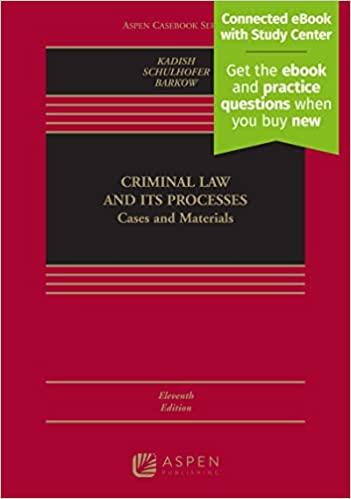Think about the context of Pride. Pride is the global celebration of LGBTQA+ people and identity politics. In addition to this sociopolitical statement, Pride has also become big business for nonprofit and for-profit companies alike. In recent years, companies ranging from MAC Cosmetics to Target to Alaska Airlines (and countless others across all business sectors) have launched campaigns to support Pride celebrations and market their products and services. This week, we will discuss the ethical implications of participation in these campaigns.
How are we to judge whether a company's latching onto Pride events to boost their own public image and profits is ethical or not? In addition to marketing Pride-themed products and services, many companies will pay to have a float or group march in the parades. One parade organizer said, "It wasn't sponsored by Target, it was sponsored by the people, and that's really what Pride is all about. Now we see lots of brands have made a calculated decision to align themselves with our cause. It's a cheap shot to slap a rainbow on merchandise, to build the flashiest corporate-sponsored float in the parade, simply because you know you will profit from the event." As this example illustrates, some Pride supporters and organizers feel that businesses who have historically ignored the LGBTQA+ community are now trying to cash in on the politics of struggles of LGBTQA+ people.
On the other hand, businesses also make the case for support and equality. In one example, Wells Fargo provided $50 million of support to roughly 60 Pride celebrations nationwide. "We just see it as the right thing to do," said Kali Caldwell, senior communications consultant at Wells Fargo. The corporate sponsorship of Pride events and the increase in Pride-related merchandise in stores help promote visibility of LGBTQA+ people and the sociopolitical causes of the community."
Think about these two sides of the debate, what ethical and legal responsibilities do corporations have when dealing with diversity issues? Take on the side of a business owner (or CEO), an employee, or a consumer to frame your response.
Question Completion Status: the Finished Goods inventory account. QUESTION 50 Given total fixed costs are $15,000 for the period and variable costs are $5 per unit, what is the total cost at an activity level of 8,000 units? $15,000. O $55,000. $40,000. $23,000.D Question 26 A country has a GDP of Y=C+I+G+X C=24, 1=19, G=36, X=27. What is the size of the country's current account? Question 27 A country has a GDP of Y=C+1+G+x C=6, 1=48, G=16, X=-15. What is the size of the country's national saving?73 Flowcharts D. A two-part check is manually prepared from data on a vendor invoice. D. E. The system prepares a check that is mailed to the customer. E. F. A report is prepared from data stored on magnetic tape. F. G. Billing data are entered into a system from a terminal and used to update both the sal customer database. G.Lab Micro Fall 2019 BONUS #1 (2 points): For all of the following questions, draw the Flowchart corresponding to them by hand then capture it and submit it online. Incorrect flowchart gets 0 points (no partial points). General Notes: 1. If part of the problem needs a loop, then you must draw the loop. 2. If part of the flowchart calls a subroutine, then you must draw the flowchart of the subroutine. 3. All flowchart must be labeled (e.g. main, delayD, operationX, .. etc.) 4. Each step should be unambiguous (i.e. well defined (i.e. cannot be interpreted in two different ways)). Question1 (0.5 points): Draw a flowchart for an 8051 program that adds two 16 bits numbers, call them x, and y, then the result is stored in z. Note: 8051 uses registers of length 8bits, then you have to show how the flowchart deals with this problem (hint: check Lab 2's exercise). Question2 (0.5 points): Draw a flowchart for an 8051 program that reads a list of data from the RAM starting at location S (S E [20H, 7FH]). The list is terminated by the value OH. The program then calculates the difference between number of evens and number of odds in the list (0 is not even nor odd). Question3 (1 points): Draw a flowchart for an 8051 program that works as a vending machine. Each switch connected to port 1 is considered as 50Fils coin. The user should turn switches ON and OFF which correspond to the amount of 50filses he inputted. The program then counts the number of 50Filses and output number of 100Filses to port 2, and number of the remaining 50Filses to port 3. (the program should loop forever). Example: If: Port1: 00111011 ;0+0+50+50+50+0+50+50 = 250Fils Then: Port2: 00000010 ;2x100Fils Port3: 00000001 ;1x50FilsThe partnership of Wingler, Norris, Rodgers, and Guthrie was formed several years ago as a architectural firm. Several partners recently had personal financial problems and decided to terminate operations and liquidate the business The following balance sheet summarized It's financial information on January 5 at the beginning of this process: Cash $17,000 Liabilities $79,000 Accounts Receivable 80,000 Rodgers, Loan 25,000 Inventory 100,000 Wingler, Capital 141,000 Land 57,000 Norris, Capital 100,000 Building and Equipment (net) 193,000 Rodgers, Capital 62,000 Total Assets 447,000 Guthrie, Capital Total Liabilities and Capital 447,000 The estimated liquidation expenses were 18,000 Profit and loss allocation ratio according to the provisions of partnership agreement: Wingler 40% Norris 20 Rodgers 10% Guthrie 30% The following transactions occurred during the liquidation: Jan. 14 Collected 70% of the total accounts receivalbe with the rest judged to be uncollectible 709 Feb. 23 Sold the land, building and equipment for 180,00 0 Mar. 1 Made safe capital distributions Mar.29 Learned that Guthrie became personally insolvent Apr, 3 Paid all liabilities Jun. 30 Sold all inventory for 55,000 Jul. 1 Made safe capital distributions again Sep. 26 Paid liquidation expenses 15,000 Nov. 4 Made final cash distrubtions to the partners based on the assumption that all partners except Guthrie are personally solvent











